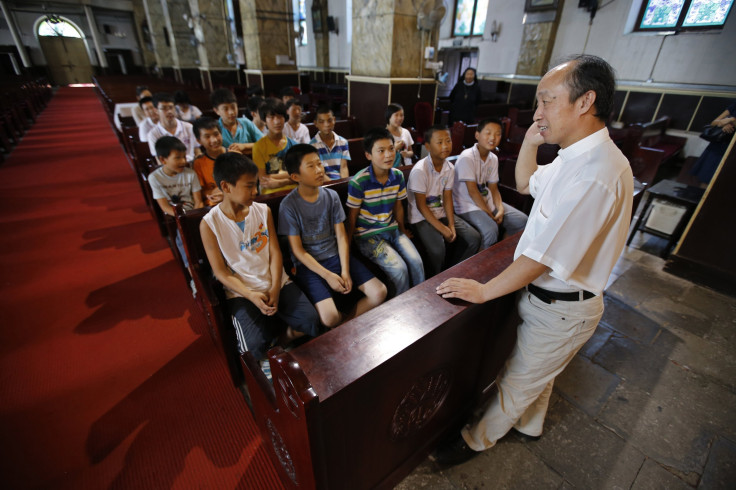China Establishes New 'Christian Theology' To Control Its Christian Population

In a country known for quixotic public campaigns, China’s latest surely ranks among its most creative. The government will create a “Chinese Christian Theology” to guide the practice of Christianity in the country, the China Daily reported Thursday. Although the government has yet to provide any details into what this new theology entails, its purpose is clear: Speaking to China Daily, Wang Zuo, director of the State Administration of Religious Affairs, said, “The construction of Chinese Christian Theology should adapt to China’s national condition and integrate with Chinese culture.”
On the surface, it may seem strange that an officially atheist state would create a new theology. But the endeavor provides a glimpse into an increasingly religious country, and a government’s desire to deflect any potential challenge to its authority.
Since relaxing prohibitions on religious faith in 1982, the Chinese Communist Party now recognizes five official faiths: Protestantism, Catholicism, Taoism, Buddhism and Islam. Because much religious faith remains underground, it is difficult to establish the precise number of worshippers in China. But a 2007 survey estimated that 31 percent of the country’s population, a number exceeding 400 million people, practiced a religious faith of some kind. Each religion has an organized, government-sanctioned hierarchy that is headquartered in Beijing and under the direct supervision of the Chinese Communist Party.
Even with that structure in place, the government has occasionally felt the need to further exert its control over the country’s religious life. In recent years, this trend has intensified. In 2007, Beijing passed a law prohibiting Buddhists from reincarnation. (The government has thus far not revealed whether there have been any violations.) In Tibet, government minders have replaced monks as supervisors of Buddhist temples throughout the region, reversing a long-standing policy.
In the far-western Xinjiang region, whose 9 million ethnic Uighurs practice a mild form of Sunni Islam, Beijing limits permission of Muslims to make the Hajj pilgrimage to Mecca, while in July China banned fasting during the holy month of Ramadan. And this month, in Karamay, the local government said residents wearing Islamic clothing, and men wearing long beards, could not legally board city buses.
China’s religious repression in Xinjiang and Tibet has a clear political purpose: Beijing regards both regions as separatist threats, and has invested large sums of money in cajoling Uighurs and Tibetans toward loyalty to the Communist Party. But Christians, who do not have a specific geographical base in China, also experience persecution. In Wenzhou, government officials in April abruptly shut down a popular church without explanation, while police tore down crosses from thousands of churches throughout the city.
China’s attempts to micromanage Christian practice in the country have done little to stem the religion’s popularity: By 2030, one influential pastor estimates, China will have nearly 250 million Christians. That would, at current projections, give the officially atheist country the world’s largest Christian population.
For now, the Chinese government appears to recognize it cannot return to the Maoist era, which largely suspended all religious life in the country. But the creation of a bespoke Chinese Christian theology is an attempt to co-opt China’s newfound devotion into an explicitly patriotic enterprise.
Still, in a country where Web searches for Jesus far outnumber those for President Xi Jinping, Beijing may have a major challenge on its hands.
© Copyright IBTimes 2024. All rights reserved.












